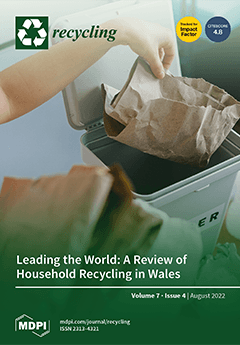Open AccessArticle
An Approach for Automated Disassembly of Lithium-Ion Battery Packs and High-Quality Recycling Using Computer Vision, Labeling, and Material Characterization
by
Merle Zorn, Christina Ionescu, Domenic Klohs, Konstantin Zähl, Niklas Kisseler, Alexandra Daldrup, Sigrid Hams, Yun Zheng, Christian Offermanns, Sabine Flamme, Christoph Henke, Achim Kampker and Bernd Friedrich
Cited by 31 | Viewed by 10262
Abstract
A large number of battery pack returns from electric vehicles (EV) is expected for the next years, which requires economically efficient disassembly capacities. This cannot be met through purely manual processing and, therefore, needs to be automated. The variance of different battery pack
[...] Read more.
A large number of battery pack returns from electric vehicles (EV) is expected for the next years, which requires economically efficient disassembly capacities. This cannot be met through purely manual processing and, therefore, needs to be automated. The variance of different battery pack designs in terms of (non-) solvable fitting technology and superstructures complicate this. In order to realize an automated disassembly, a computer vision pipeline is proposed. The approach of instance segmentation and point cloud registration is applied and validated within a demonstrator grasping busbars from the battery pack. To improve the sorting of the battery pack components to achieve high-quality recycling after the disassembly, a labeling system containing the relevant data (e.g., cathode chemistry) about the battery pack is proposed. In addition, the use of sensor-based sorting technologies for peripheral components of the battery pack is evaluated. For this purpose, components such as battery pack and module housings of multiple manufacturers were investigated for their variation in material composition. At the current stage, these components are usually produced as composites, so that, for a high-quality recycling, a pre-treatment may be necessary.
Full article
►▼
Show Figures





